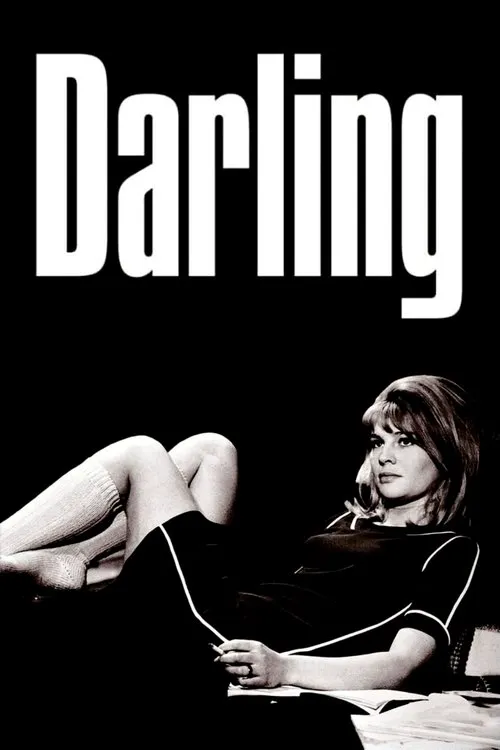Darling

Plot
In the vibrant and liberated world of swinging London, the year is 1962, and the film "Darling" captures the essence of a city alive with music, fashion, and desire. At the center of this whirlwind is Diana Scott, played by Julie Christie, a stunning and enigmatic figure who embodies the paradoxical spirit of the era. Beautiful, but ultimately shallow, Diana is a young woman with a hunger for fame and fortune. Diana is a professional advertising model, her face plastered on billboards and magazine covers, her body a commodity to be sold and exploited. She is a failed actress, unable to land any significant roles, but her presence on screen commands attention. As a character, Diana is an enigma, a collection of contradictions and complexities that defy easy categorization. She is simultaneously a strong-willed, independent woman and a vulnerable, emotionally fragile individual, torn between her desire for artistic expression and her need for financial stability. As Diana navigates the treacherous waters of London's social scene, she toys with the affections of several men, each vying for her attention and approval. There is Robert, her business manager, who offers a stable and secure future. There is Charles, a young artist, who provides a sense of excitement and passion. And then there is Simon, a successful fashion photographer, who represents a world of glamour and sophistication. Through her relationships, Diana is driven by a sense of self-discovery and exploration. She is drawn to each man for different reasons, and yet, each relationship represents a failure, a compromise, or a disappointment. Her desire for security and stability is constantly at odds with her need for excitement and passion, a tension that propels her from one relationship to the next. As Diana's fame grows, so does her disillusionment with the shallowness of the world she inhabits. She becomes increasingly disconnected from reality, losing touch with her true self and her authentic emotions. Her relationships become increasingly superficial, her interactions reduced to clever repartee and calculated manipulation. In the process, she loses sight of what truly matters - her own happiness and fulfillment. The film is a poignant commentary on the social and cultural norms of the era, a critique of the empty materialism and superficiality that defined the swinging '60s. Through Diana's story, director John Schlesinger and writer Frederic Raphael expose the dark underbelly of the era's excesses and superficiality, revealing a world of shallow relationships, empty gestures, and unfulfilled desires. Christie's performance is the heart and soul of the film, capturing the elusive and enigmatic essence of Diana Scott. She brings a depth and complexity to the character, revealing a rich inner life that underlies the surface level of glamour and sophistication. Her portrayal of Diana is both captivating and heartbreaking, a nuanced exploration of a woman torn between her desire for artistic expression and her need for financial security. As the film hurtles towards its conclusion, Diana's relationships begin to unravel, and her world begins to crumble. She is left to confront the emptiness and superficiality of the society she inhabits, a world that has failed to deliver on its promises of love, happiness, and fulfillment. In the end, Diana is left alone, a shell of her former self, forced to confront the consequences of her choices and the emptiness of her existence. Ultimately, "Darling" is a powerful and poignant portrayal of a woman lost in a world of her own making. Through Diana's story, we are reminded of the fragility and uncertainty of life, the ease with which our dreams and desires can lead us astray. It is a cautionary tale, a warning against the dangers of superficiality and materialism, and a testament to the enduring power of human connection and emotional depth.
Reviews
Recommendations




